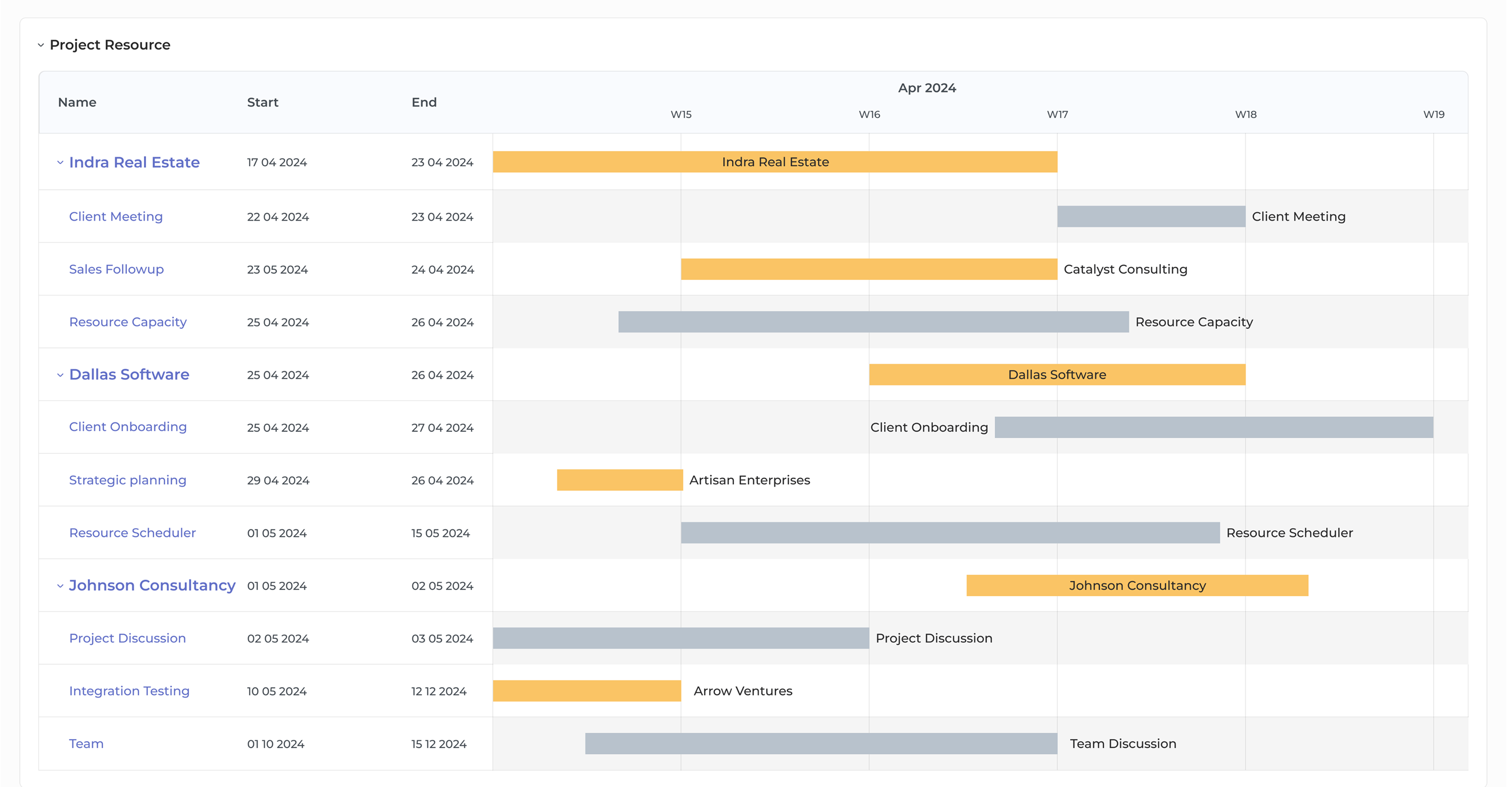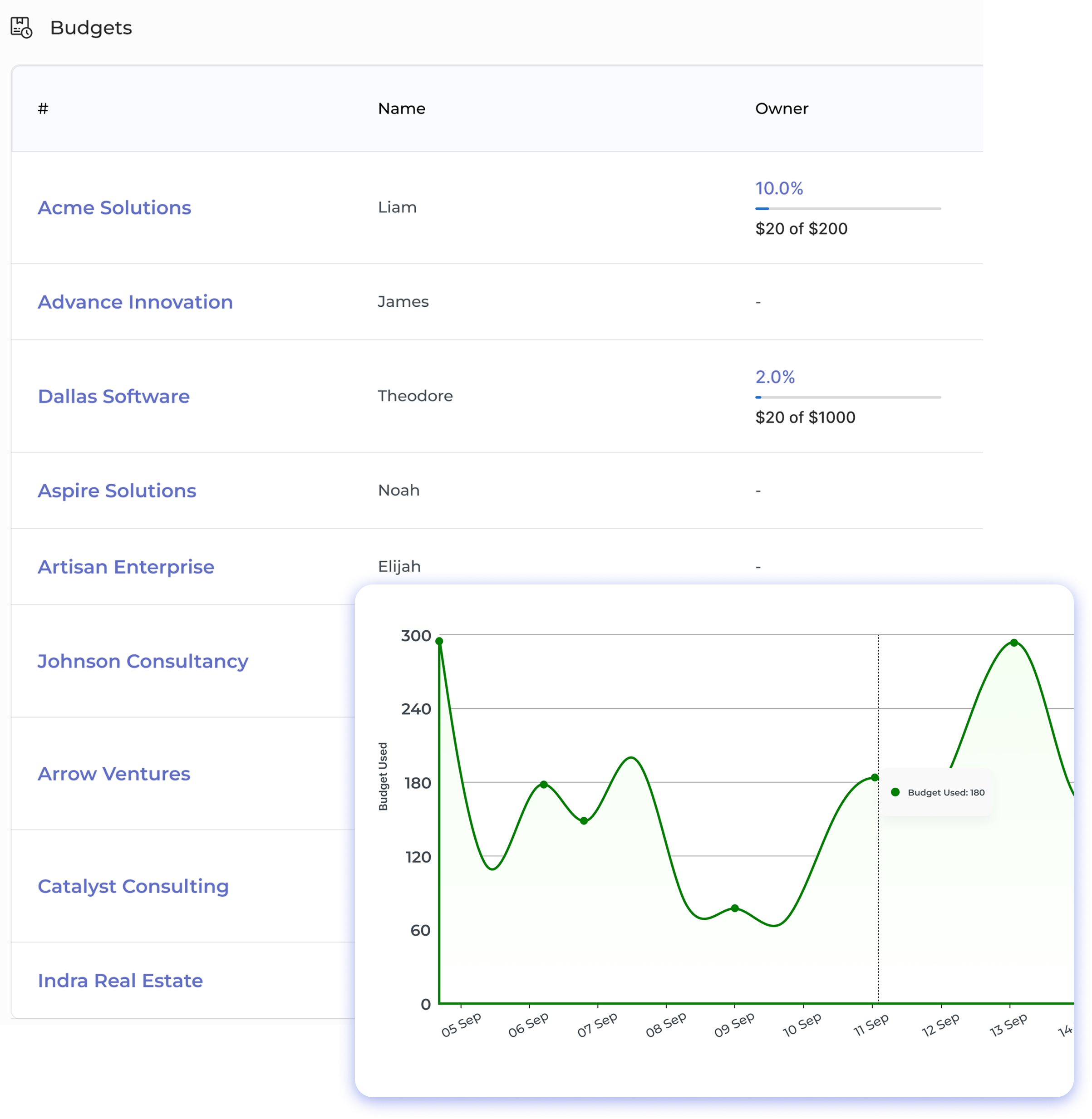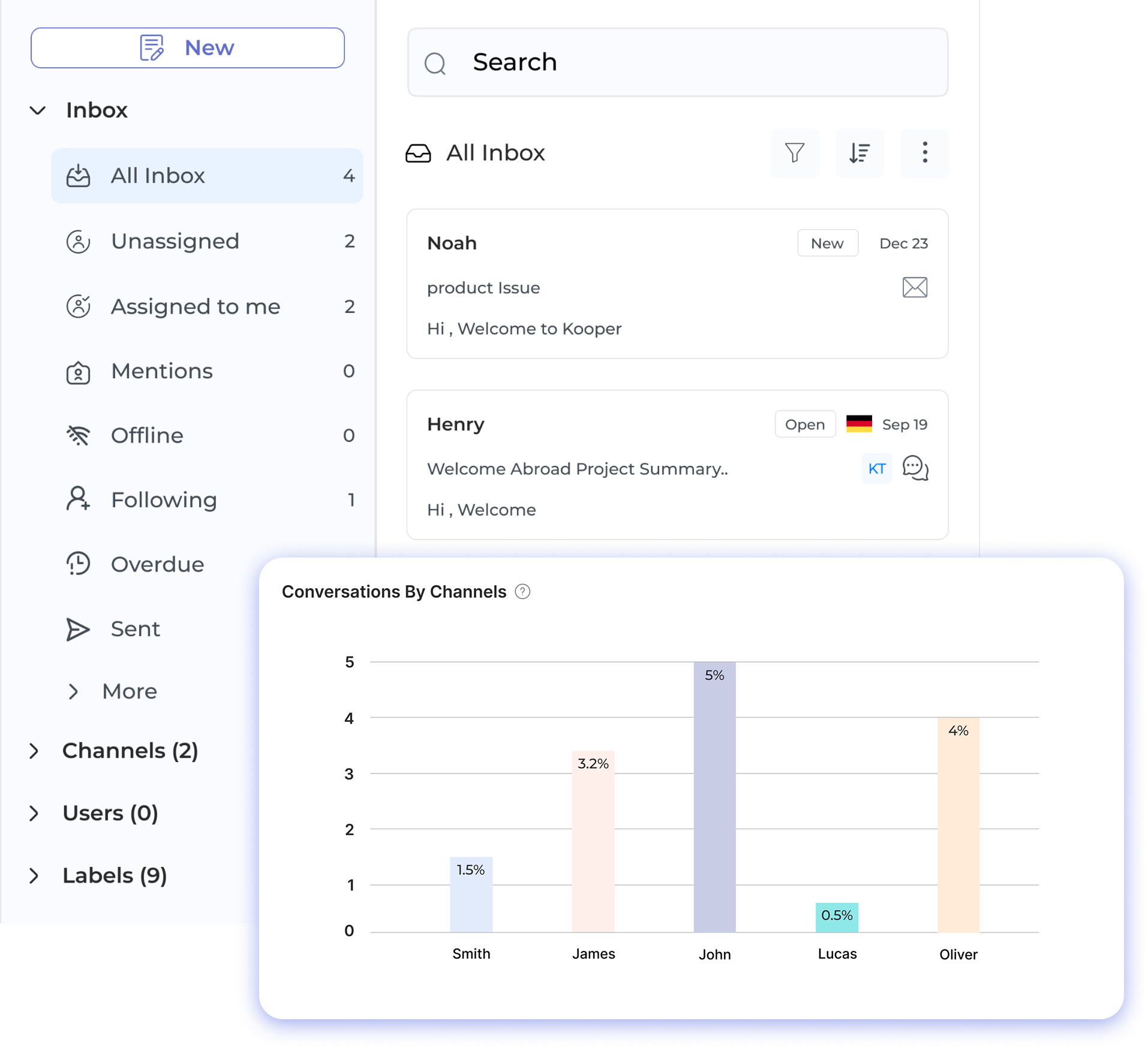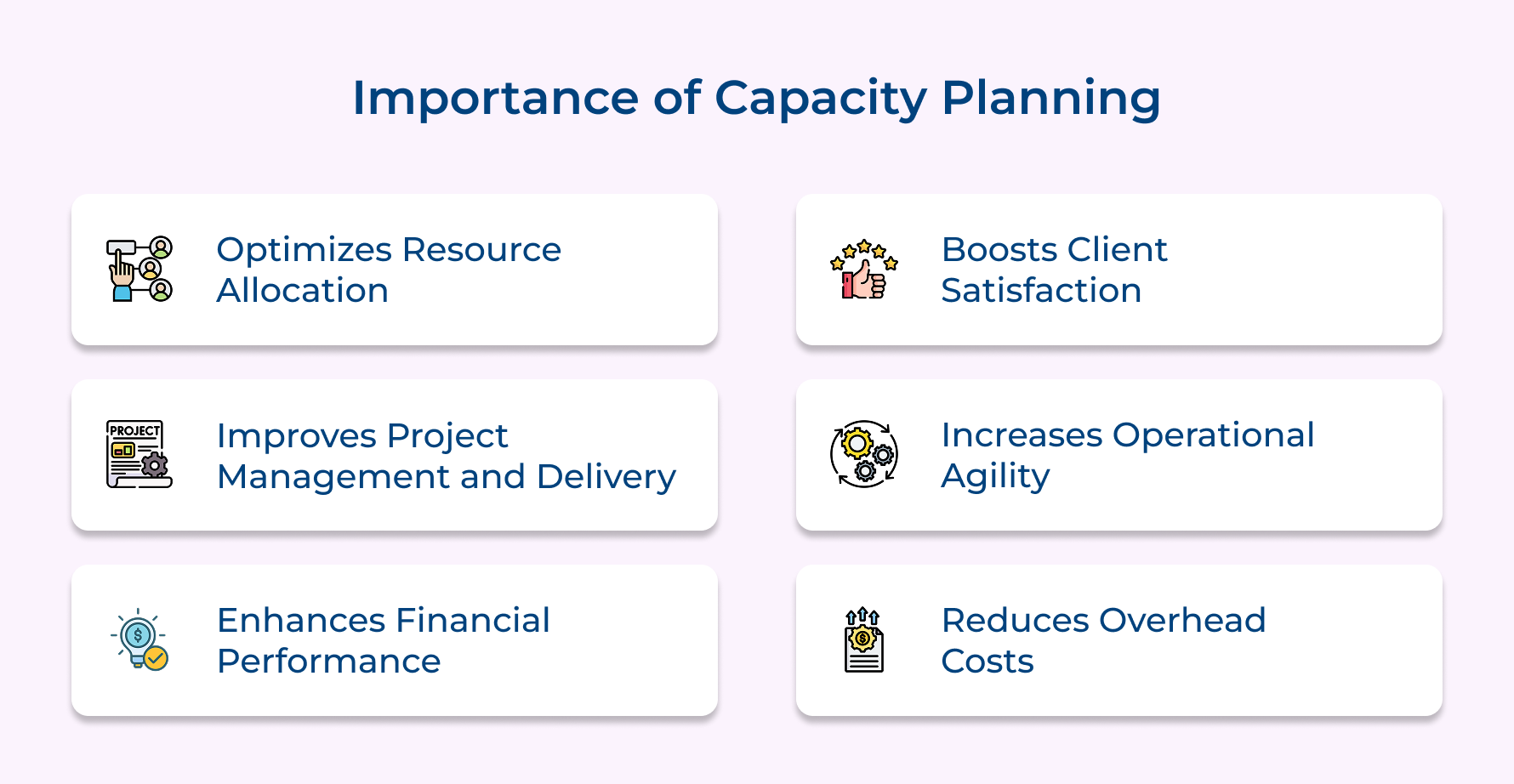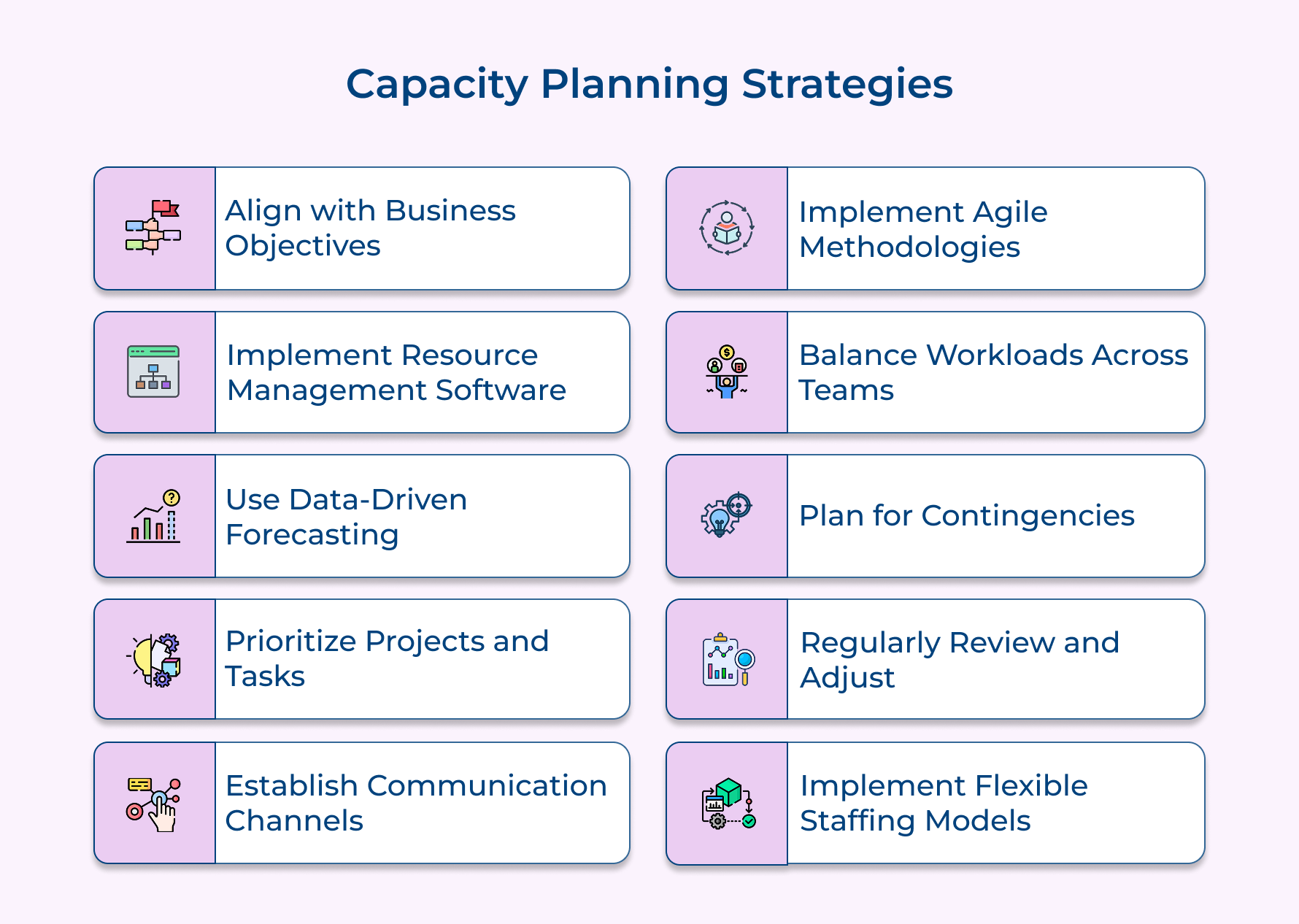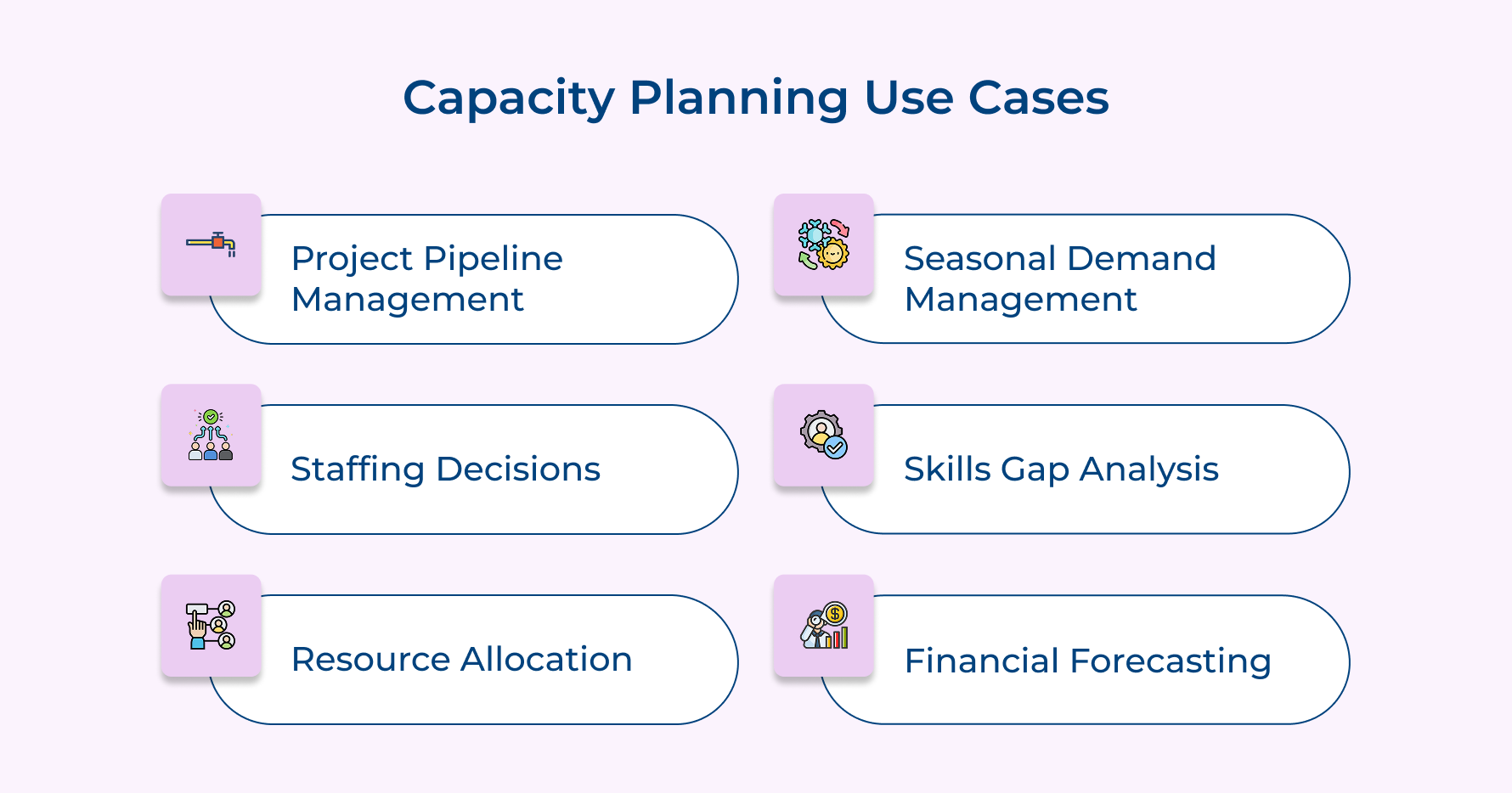1. Align Capacity Planning with Business Objectives
Aligning capacity planning with business goals and KPIs ensures that resource allocation supports the organization’s overarching goals. The alignment prevents the misallocation of resources to non-strategic initiatives and helps focus efforts on projects that drive the company’s vision. It also enables more informed decision-making about investments in capacity and helps maintain a competitive edge in the market.
Start by clearly defining the organization’s strategic objectives. Then, assess how each project or initiative contributes to these goals. Prioritize capacity allocation based on this assessment, ensuring that resources are directed towards high-impact, strategically aligned activities. Regularly review and adjust capacity plans as business strategies evolve to maintain alignment.
Actionable tips:
- Conduct quarterly strategy alignment sessions with leadership to ensure capacity plans reflect current business priorities.
- Develop a scoring system for projects based on strategic alignment, using it to guide resource allocation decisions.
2. Implement Resource Management Software
Resource management software provides real-time visibility into resource allocation, utilization, and availability. It centralizes data, automates scheduling, as well as offers insights that manual processes can’t match. This technology is crucial for making informed decisions quickly, optimizing resource use, and identifying potential capacity issues before they become problems.
Choose a software solution that fits your organization’s needs and integrates with existing systems. Use it to track resource allocation, monitor project progress, and forecast future capacity needs. Leverage its reporting and analytics features to gain insights into resource utilization trends while making data-driven decisions about capacity planning.
Actionable tips:
- Involve key stakeholders in the software selection process to ensure it meets diverse departmental needs.
- Provide comprehensive training to all users and designate ‘power users’ to support adoption and maximize software benefits.
3. Use Data-Driven Forecasting for Anticipated Demand
Data-driven forecasting reduces reliance on guesswork and intuition, leading to more accurate capacity planning. It helps organizations anticipate future demand based on historical trends, market analysis, other relevant factors, etc. It enables proactive capacity adjustments, reducing the risk of over- or under-capacity situations.
Collect as well as analyze historical data on resource utilization, project timelines, and demand fluctuations. Use statistical models and forecasting tools to predict future demand. Incorporate external factors such as market trends, economic indicators, and seasonal variations into your forecasts. Regularly refine your forecasting models based on actual outcomes.
Actionable tips:
- Implement a centralized data collection system to ensure all relevant information is captured for forecasting.
- Conduct monthly forecast reviews, comparing predictions to actual results to continuously improve accuracy.
4. Prioritize Projects and Tasks
Prioritization is essential for effective capacity planning as it ensures that limited resources are allocated to the most important and impactful work. It helps prevent resources from being spread across too many initiatives, which can lead to inefficiencies and delays. Prioritization also aligns capacity with strategic goals and helps manage stakeholder expectations.
Develop a clear prioritization framework based on factors such as strategic alignment, revenue potential, urgency, and resource requirements. Use this framework to rank projects and tasks. Regularly review and adjust priorities as business needs change. Communicate priorities clearly to all stakeholders to ensure alignment across the organization.
Actionable tips:
- Implement a project scoring system that quantifies priority based on predefined criteria.
- Hold monthly priority review meetings with key stakeholders to reassess and adjust project rankings.
5. Establish Clear Communication Channels
Clear communication channels ensure all stakeholders are informed about resource allocation, project statuses, and capacity constraints. Good communication prevents misunderstandings, reduces conflicts, and enables quick decision-making when capacity issues arise. It also builds collaboration and helps align efforts across teams.
Implement a structured communication plan that outlines how capacity-related information will be shared. It could include regular status meetings, project dashboards, and automated notifications. Ensure that there are channels for both top-down communication of priorities and bottom-up feedback on capacity issues.
Actionable tips:
- Create a centralized capacity dashboard accessible to all team members for real-time visibility.
- Establish a weekly capacity review meeting where team leads can discuss resource allocation and potential issues.
6. Implement Agile Methodologies
Agile methodologies enhance capacity planning by providing flexibility and adaptability in resource allocation. They allow for quick adjustments based on changing priorities or unforeseen circumstances. Agile approaches also improve visibility into work progress and resource utilization, enabling more accurate as well as responsive capacity planning.
Adopt agile practices such as sprint planning, daily stand-ups, and retrospectives. Use these rituals to regularly reassess capacity needs and adjust resource allocation. Implement visual management tools like Kanban boards to track work in progress and identify hurdles.
Actionable tips:
- Conduct bi-weekly sprint planning sessions to align capacity with upcoming work and priorities.
- Use velocity metrics from past sprints to improve the accuracy of future capacity estimates.
7. Balance Workloads Across Teams
Workload management is essential for preventing burnout, maintaining quality, and maximizing productivity. It ensures that resources are used efficiently across the organization, preventing situations where some teams are overwhelmed while others are underutilized. Balanced workloads also contribute to better employee satisfaction and retention.
Regularly assess the workload distribution across teams and individuals. Use resource management software to visualize capacity utilization. Implement cross-training programs to increase flexibility in resource allocation. Consider workload when assigning new projects or tasks, and be prepared to redistribute work when imbalances occur.
Actionable tips:
- Conduct weekly workload reviews with team leads to identify and address any imbalances.
- Implement a skills matrix to facilitate cross-team resource sharing and balance specialized skill sets.
8. Plan for Contingencies
Contingency planning prepares the organization for unexpected events or changes in demand. It helps maintain operational stability during disruptions and enables quick responses to capacity shortfalls or surpluses. Contingency planning also reduces stress on teams by providing clear courses of action in various scenarios.
Identify potential risks or scenarios that could impact capacity, such as key resource unavailability or sudden increases in demand. Develop specific plans for each scenario, outlining how resources will be reallocated or additional capacity will be acquired. Regularly review and update these plans to ensure they remain relevant as well as effective.
Actionable tips:
- Conduct quarterly risk assessment workshops to identify potential capacity disruptions and develop mitigation strategies.
- Maintain a pool of pre-vetted freelancers or contractors who can be quickly engaged to address capacity shortfalls.
9. Regularly Review and Adjust Capacity Plans
Regular review and adjustment of capacity plans are essential because business environments as well as resource needs are constantly changing. This practice ensures that capacity plans remain aligned with current realities and future projections. It helps address inefficiencies, and adapt to new priorities while maintaining optimal resource utilization.
Schedule regular capacity plan reviews, ideally monthly or quarterly. During these reviews, assess the accuracy of previous forecasts, analyze current resource utilization, and consider upcoming projects or initiatives. Use data from your resource management software to inform these reviews. Be prepared to make both minor tweaks and major overhauls to your capacity plans as needed.
Actionable tips:
- Implement a monthly capacity planning cycle with weekly check-ins to ensure plans remain current.
- Develop a set of key performance indicators (KPIs) for capacity utilization and review these metrics during each planning session.
10. Implement Flexible Staffing Models
Flexible staffing models are crucial for adapting to fluctuating demand and changing project requirements. Here, organizations scale their capacity up or down quickly, reducing the risks associated with over- or under-staffing. Flexible models also provide access to specialized skills that may not be needed on a full-time basis.
Develop a mix of full-time employees, part-time staff, contractors, and freelancers. Use project-based hiring for specific initiatives. Implement job-sharing or flexible hours to maximize resource utilization. Leverage remote work options to access a wider talent pool. Use resource management software to track and manage this diverse workforce effectively.
Actionable tips:
- Create a talent pool of pre-vetted freelancers and contractors for quick engagement during demand spikes.
- Implement a flexible work policy that allows for adjusting work hours or locations based on project needs and personal preferences.
